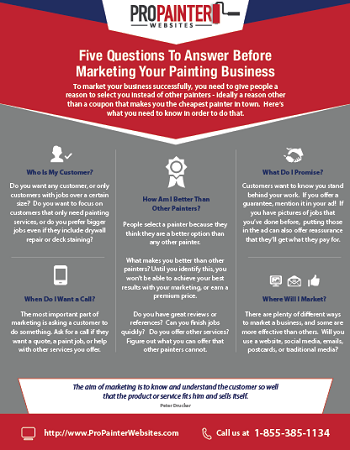When you're intending a business external painting job, seasonal elements can make or break your outcomes. You'll want to consider exactly how temperature level and moisture impact paint application and drying out times. Selecting the right season can guarantee your paint adheres correctly and lasts much longer. However which periods are truly the most effective for this sort of work? Allow' https://localpaintersnearme76420.prublogger.com/33459423/work-with-professional-house-painters-to-improve-your-home-s-aesthetic-appeal-and-uncover-the-phenomenal-outcomes-that-will-certainly-leave-you-wanting-more out the crucial elements that can affect your task's success.
The Impact of Temperature on Paint Application
When you're planning a commercial external painting project, the temperature can considerably influence exactly how well the paint adheres and dries out.
Ideally, you intend to paint when temperatures vary in between 50 ° F and 85 ° F. If it's too cold, the paint might not cure properly, leading to issues like peeling off or cracking.
On the other side, if it's also warm, the paint can dry too swiftly, protecting against appropriate adhesion and causing an unequal finish.
https://www.homesandgardens.com/news/worst-mistake-to-make-when-painting-house-exterior need to additionally think about the time of day; early morning or late afternoon provides cooler temperature levels, which can be much more beneficial.
Constantly examine the manufacturer's recommendations for the specific paint you're using, as they commonly provide assistance on the excellent temperature level array for ideal results.
Humidity and Its Impact on Drying Times
Temperature level isn't the only ecological factor that affects your industrial outside painting project; humidity plays a substantial function also. High moisture levels can reduce drying times substantially, impacting the overall quality of your paint job.
When the air is filled with moisture, the paint takes longer to heal, which can bring about concerns like inadequate bond and a greater threat of mold development. If you're painting on a particularly humid day, be planned for extensive wait times in between layers.
It's crucial to keep track of regional weather conditions and plan accordingly. Preferably, go for humidity degrees between 40% and 70% for ideal drying out.
Keeping these factors in mind guarantees your job stays on track and supplies an enduring coating.
Best Seasons for Commercial Outside Paint Projects
What's the most effective season for your commercial external paint tasks?
Spring and very early autumn are commonly your best bets. During these periods, temperature levels are mild, and humidity degrees are usually lower, producing optimal problems for paint application and drying.
Avoid summertime's intense heat, which can trigger paint to completely dry also rapidly, causing poor adhesion and finish. In a similar way, wintertime's cold temperature levels can impede proper drying out and healing, taking the chance of the durability of your paint job.
Aim for days with temperatures in between 50 ° F and 85 ° F for optimum results. Remember to examine the local weather report for rainfall, as damp conditions can wreck your task.
Preparation around these factors ensures your painting task runs efficiently and lasts longer.
Verdict
To conclude, planning your business external paint projects around seasonal considerations can make a considerable distinction in the outcome. By scheduling work throughout the ideal temperatures and moisture levels, you'll guarantee better bond and drying out times. Remember to keep an eye on local weather prediction and pick the right time of year-- spring and early loss are your best bets. Taking these actions will assist you attain a durable and professional finish that lasts.

 Haley Joel Osment Then & Now!
Haley Joel Osment Then & Now! Michael J. Fox Then & Now!
Michael J. Fox Then & Now! Richard "Little Hercules" Sandrak Then & Now!
Richard "Little Hercules" Sandrak Then & Now! Brandy Then & Now!
Brandy Then & Now! Soleil Moon Frye Then & Now!
Soleil Moon Frye Then & Now!